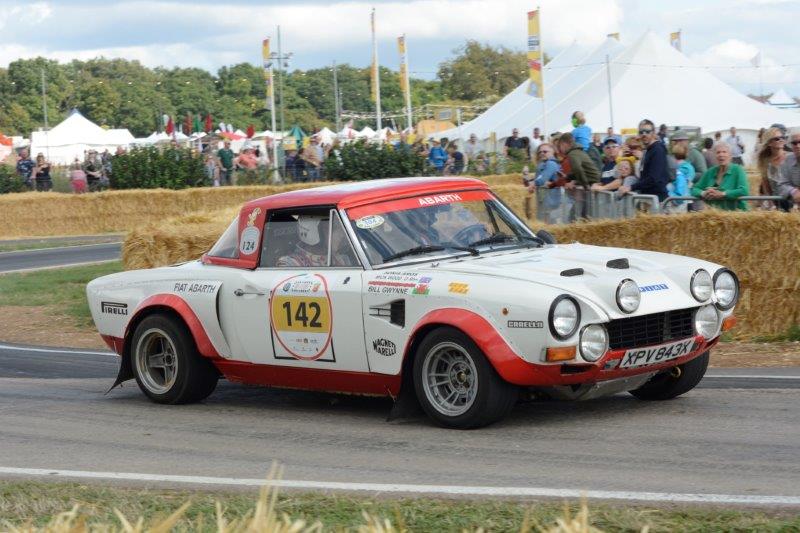Background
In the 1970’s, many manufacturers recognised the marketing benefits from success in rallying. FIAT was one amongst these and set aside a large budget with the aim of winning the World Championship (first announced for ’73). To run the program, FIAT purchased the famous competition firm of ABARTH, which had been successful in many strands of motorsport. The first events utilised a tuned version of the sporty Fiat 124 Spider, which showed promise, if lacking outright speed.
For 1973, an entirely new version of the 124 was created, to the limit of the then applicable Group 4 regs. As can be imagined from such a respected form as Abarth, this was not just a matter of uprating the power and sticking on some badges; every aspect of the car was tweaked. The body shell was strengthened, but made lighter with Glassfibre boot, bonnet and hardtop and alloy panelling on doors and sills. The engine was uprated, and a five speed gearbox fitted. However, the biggest changes were to the suspension, including a fully independent rear layout, replacing the live axle on the standard 124. Whilst the “homologation special cars were highly developed, the works competition cars were different again, with almost every part changed. In 1973, the car showed great promise finishing second in the World Championship with outright wins in Portugal and Poland.
For 1974, the car was further developed, including a slightly bigger engine giving around 180bhp, and much was expected, but a number of events early in the year were cancelled due to the World Oil Crisis. Despite further evolution throughout the year, the 124 again finished second in the World Championship, beaten this time by the mighty Lancia Stratos.
Abarth continued to develop the cars throughout 1975, with the cars gaining wider bodies to accommodate bigger wheels, further uprated transmission and suspension, and most importantly, the introduction of a 16 valve engine giving around 200 bhp. The final version also gained Kugelfischer mechanical fuel injection, boosting the power to around 215bhp. In this form, the cars could finally compete with the Stratos on Tarmac but, again the little 124 finished second in the World Championship. Victory in the European Championship (Verini/Rossi) and Italian Championship (Cambiaghi/Sanfront) gave some consolation.
The competition life of the 124 ended suddenly after Monte Carlo Rally in 1976. The Board of FIAT wanted a car that more reflected the cars they were selling in the high street show rooms so ABARTH set about developing the 131. Introduced in mid ’76, the 131 went on to dominate rallying in the late 70’s with three world titles.
This Car
This car was originally built up in mid 1974, to be run by a works supported dealer team in Brescia. It was originally built to quite a mild G4 spec, but in early 1975, the car went back to the factory and was uprated to the ultimate works “wide body” specification. In this form it competed in Italian and European Championship events, including the Giro D’Italia, Monte Carlo Rally and Targa Florio. At that time it was White and Green.
It changed hands a couple of times in Italy, being owned by Scuderia BresciaRally, and later by Team Compromet. The car came to the UK in ’82, still in the White/Red of Team Copromet. It appears in many articles and books as the “Jolly Club” car.
It was bought by the current owner in ’91, and rallied extensively in UK historic events until circa 2000 with many class and outright victories. Following an accident at the Goodwood Festival in 2010, the car was fully restored back to its 1975 Spec (although retaining the colours it has worn since 1980). Wherever possible, the restoration retained the original works parts. Where parts had to be remanufactured, they were made to the original patterns, often by the same ex works engineers who made them originally. The only non period parts are those necessary to comply with current safety regulations.
It is now fitted with one of the very rare 16v injected engines (the factory probably only made around 10!)
Technical :-
Engine : Works Fiat Abarth 16v, 210bhp at circa 8000 RPM
Induction : Naturally Aspirated, Kugelfsicher Mechanical Fuel Injection
Transmission : Rear Wheel Drive, Five Speed, Straight Cut Close Ratio

